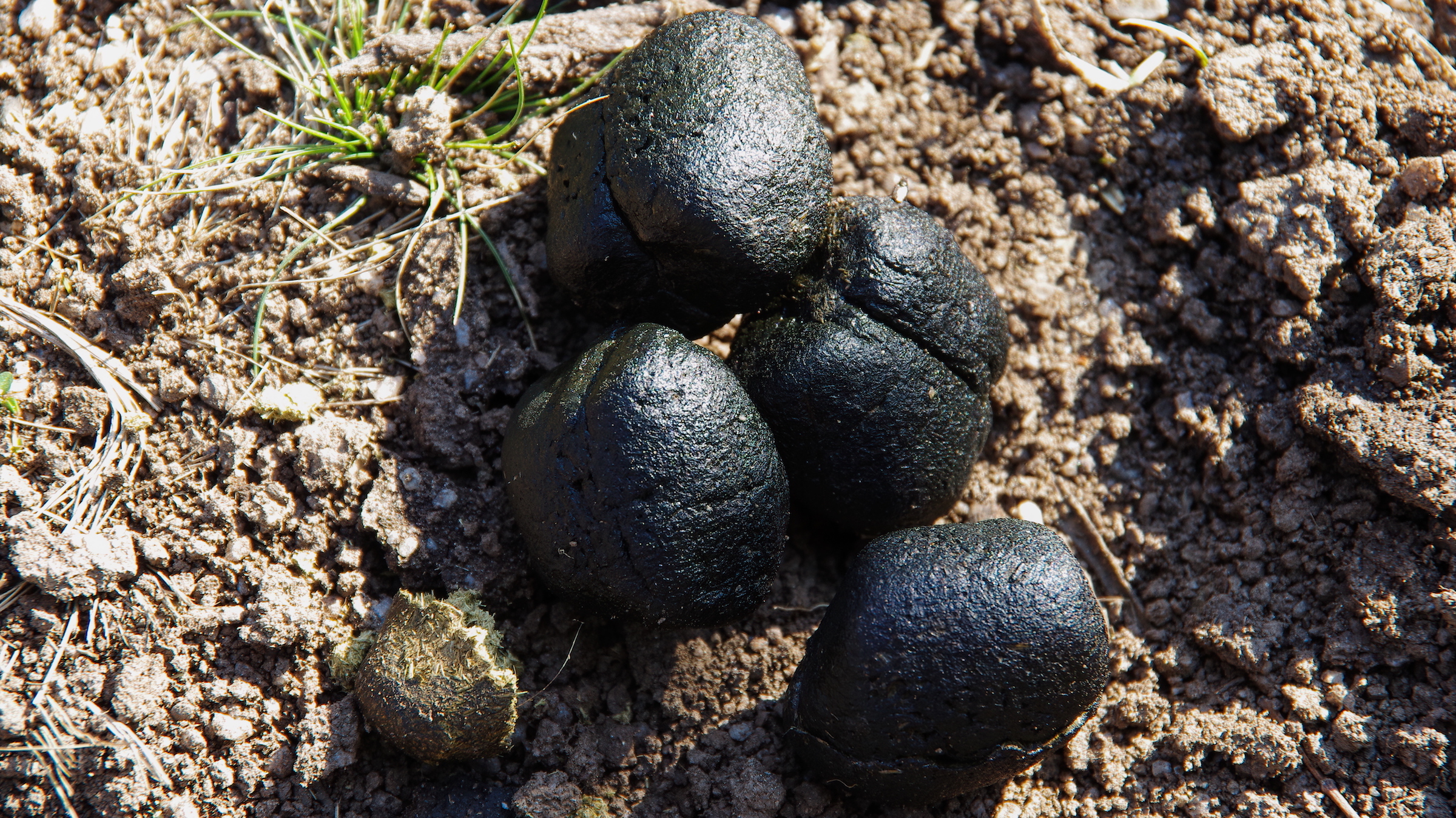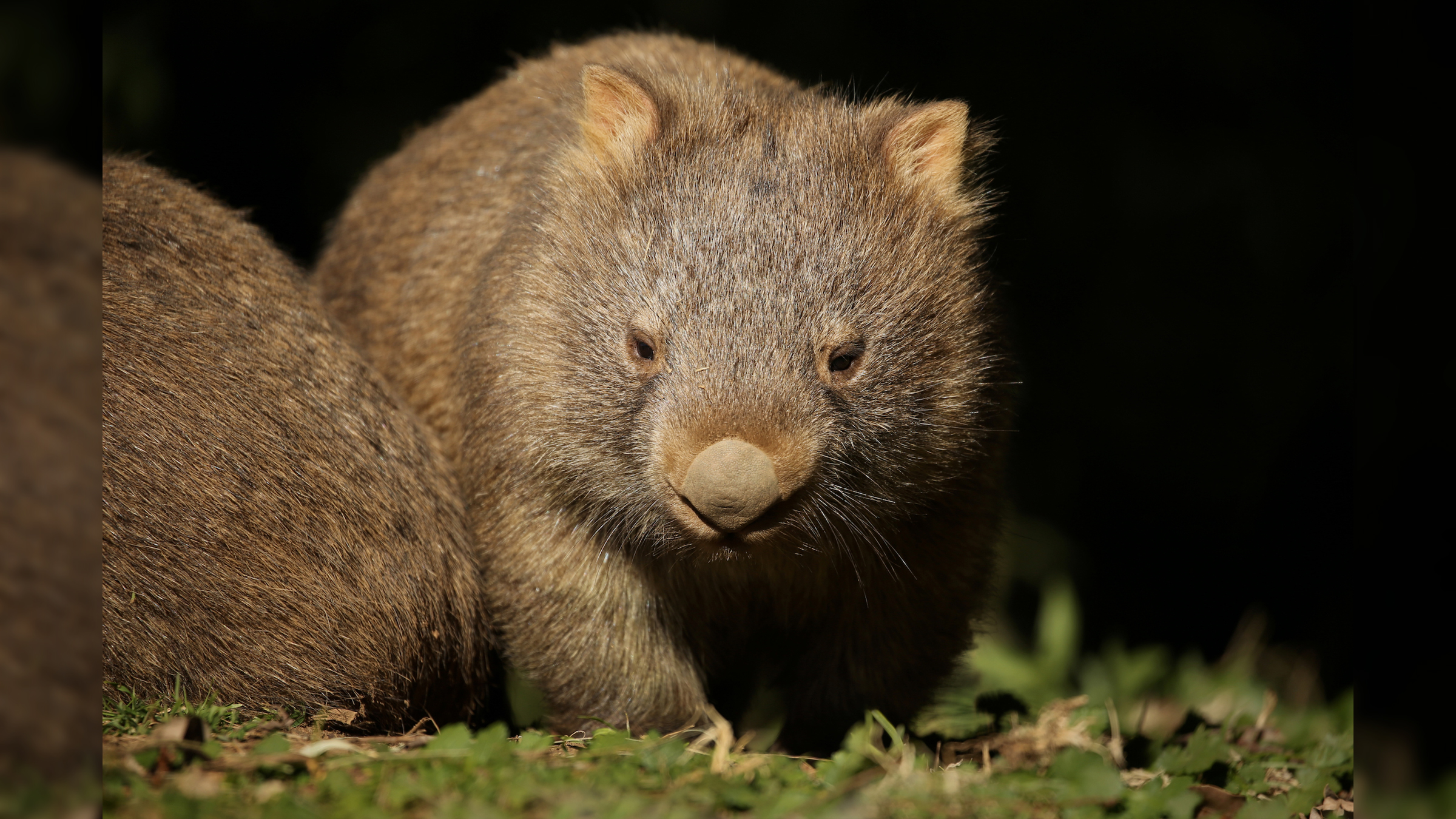Why do wombats have cube-shaped poop?
It's not due to the shape of their "backdoor."

When nature calls, wombats poop out a masterpiece — a pile of cubed-shaped BMs, the only animal known to do so. And now, scientists may finally know how wombats pull off this feat, according to a new study published online Thursday (Jan. 28) in the aptly named journal Soft Matter.
The wombat, a small, tunneling marsupial that lives Down Under, has block-like poops because of the shape of its intestines, the international team of researchers found.
Previously, some researchers had incorrectly proposed that the shape of the wombat's anal sphincter led to the animal's distinctive droppings, much like how Play-Doh can emerge in different shapes when its pushed through different extruders. Even unpublished research presented by the same team at the American Physical Society Division of Fluid Dynamics conference in 2018 didn't quite pinpoint the exact regions of the intestine responsible for the box-like dung, even though it won an Ig Nobel prize in 2019.
Related: Marsupial gallery: A pouchful of cute
But now, after studying wombat intestinal tissues, examining a CT (computed tomography) scan of a live bare-nosed wombat (Vombatus ursinus) and harnessing mathematical models, the team learned that the poop's cubic geometry likely originates in the last 17% of the wombat's intestinal tract. The wombat intestine is long, about 32 feet (10 meters), or about 10 times the length of its body. But four places — two that are stiffer and two that are more flexible than the rest of the intestine due to changes in muscle thickness — are key for forming the cubic excrements, the researchers found.
It's likely that these areas of varying muscle thickness help shape the cubes' sharp corners as the intestine undergoes rhythmical contractions, the researchers said. "The corners arise from faster contraction in the stiff regions and relatively slower movement in the center of the soft regions," the researchers wrote in the study.

Moisture, or lack thereof, also plays a role. Unlike humans, whose digestive process takes one to two days, a wombat's takes as much as four times longer, allowing the marsupial to extract the utmost nutrition. The wombat's intestines are also excellent at extracting water, which explains why their poop is one-third drier than humans. This drying process, which largely happens in the last part of the colon, known as the distal colon, probably helps the wombat keep its poop in a dice-like shape.
Sign up for the Live Science daily newsletter now
Get the world’s most fascinating discoveries delivered straight to your inbox.
The idea for the study began when study co-researcher Scott Carver, a wildlife ecologist at the University of Tasmania, was dissecting a wombat cadaver during a research project on treating mange, a skin disease caused by parasitic mites. It was known that "they place these feces at prominent points in their home range, such as around a rock or a log, to communicate with each other," Carver said in a statement. But it wasn't clear how they made these cubic droppings.
That mystery, now solved, might help scientists assess wombat health. "Sometimes [captive wombat] feces aren’t as cubic as the [wild] ones," study co-researcher David Hu, a biomechanics researcher at the Georgia Institute of Technology, told Science magazine. In other words, wombats with squarer poops might have healthier guts.
In addition, "These results may have applications in manufacturing, clinical pathology and digestive health," the researchers wrote in the study.
Originally published on Live Science.

Laura is the archaeology and Life's Little Mysteries editor at Live Science. She also reports on general science, including paleontology. Her work has appeared in The New York Times, Scholastic, Popular Science and Spectrum, a site on autism research. She has won multiple awards from the Society of Professional Journalists and the Washington Newspaper Publishers Association for her reporting at a weekly newspaper near Seattle. Laura holds a bachelor's degree in English literature and psychology from Washington University in St. Louis and a master's degree in science writing from NYU.










